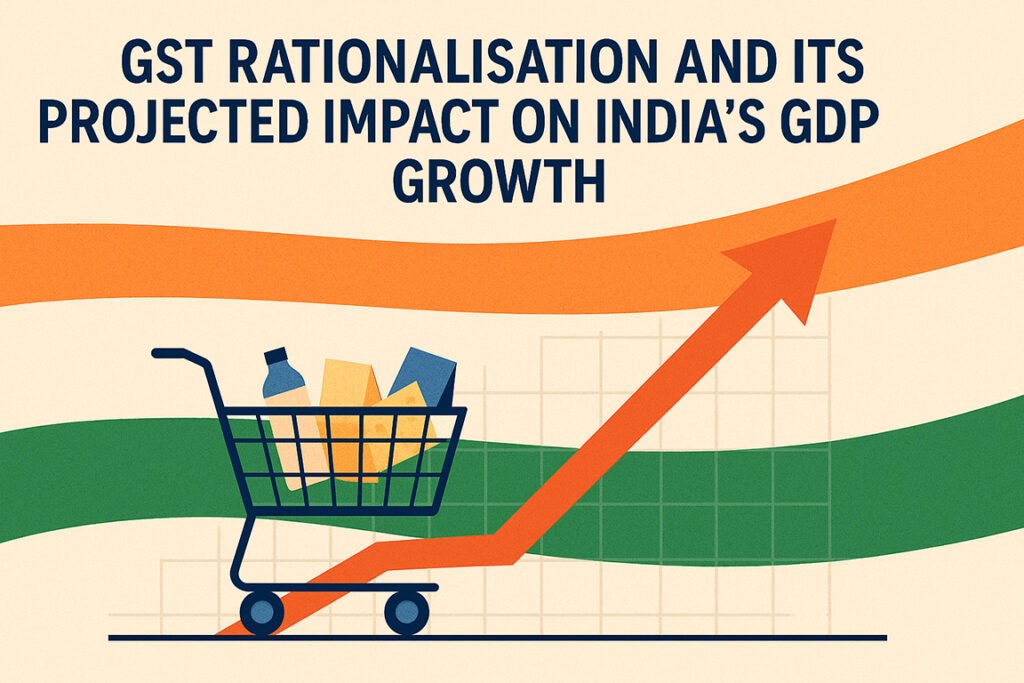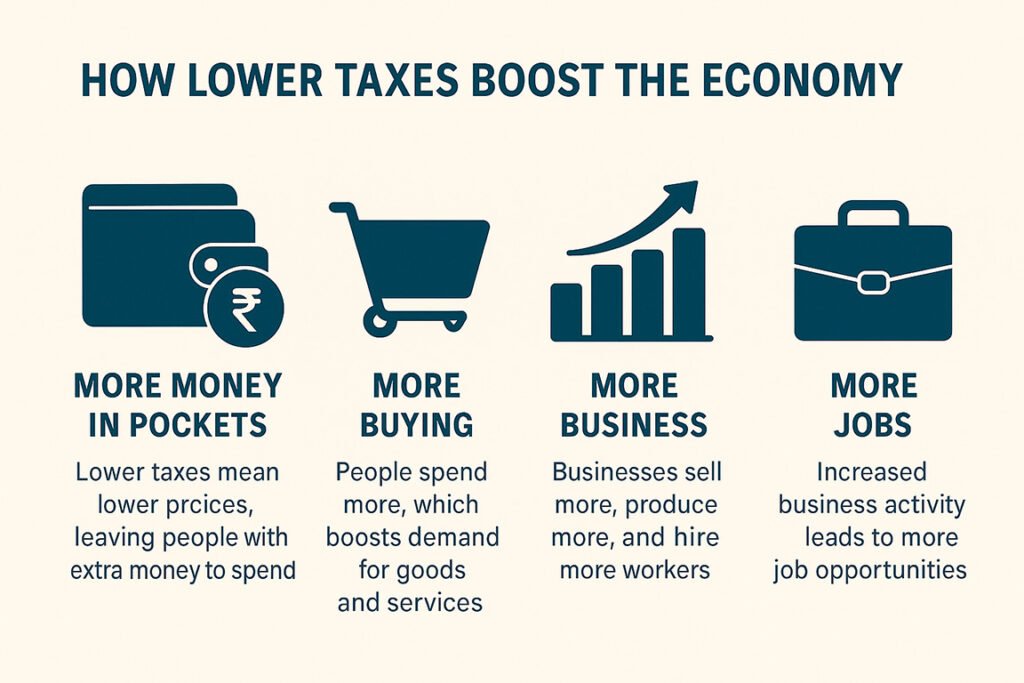
GST Rationalization and the Projected Impact on India’s Economic growth
India’s Goods and Services Tax (GST), implemented in 2017, was hailed as the country’s most significant indirect tax reform. Yet, over the years, its complex multi-slab structure (ranging from 5% to 28%) often drew criticism from businesses, consumers, and economists. The recent GST rationalisation, which has effectively reduced the slabs to two broad rates — 5% and 18% — marks a major step toward simplification.
The reform is not just about streamlining taxes; it has direct macroeconomic implications. Economists project that lower rates will boost consumption, lift demand across sectors, and ultimately add between 0.2% and 1.2% to India’s GDP growth over the next year.
How Lower GST Boosts Growth

– Cheaper goods, higher demand: Lower tax rates directly reduce the cost of goods and services. For example, consumer durables like washing machines and electronics saw earlier cuts from 28% to 18%; the new rationalisation expands this logic further.
– Multiplier effect: More demand means higher sales → increased production → job creation → more consumption. Economists call this the multiplier effect.
Projected GDP Growth Impact
– Reuters: +100–120 bps (1.0–1.2%) growth over 4–6 quarters.
– Morgan Stanley & Jefferies: +50–70 bps, from ~₹2.4 lakh crore demand stimulus.
– ICRA: Raised FY26 forecast from 6.0% to 6.5%.
– HDFC Bank & QuantEco Research: +20–30 bps uplift.
– SBI Research: ₹5.3 lakh crore additional consumption (~1.6% of GDP).
Sectoral Impact
– Consumer Goods & FMCG: Lower taxes on essentials and packaged goods support rural and urban demand.
– Automobiles: Tax cuts can revive sales in two-wheelers and small cars, as seen in earlier rounds.
– Insurance & Services: Lower effective rates benefit middle-class households.
– Electronics & White Goods: Smartphones and appliances see greater affordability, aiding “Make in India.”
Offsetting Global Headwinds
Global economic conditions, particularly rising US tariffs on Indian goods, pose risks to exports. Fitch’s BMI Research notes that GST rationalisation can offset as much as 0.2 percentage points of lost GDP growth from tariff drag by spurring domestic consumption. Since private consumption drives nearly 60% of India’s GDP, this is a critical buffer.
Fiscal Implications
Initially, the government may face a short-term revenue loss as per-unit tax collections fall. However, if consumption expands — as projected by SBI and ICRA — the higher volume of sales can neutralise or even outweigh the loss. GST collections have already proven resilient, averaging ₹1.7–1.8 lakh crore monthly in FY24–25, continuously touching record highs.
Broader Economic Significance
– Simplification: Fewer slabs reduce disputes and ease compliance.
– Formalisation: Lower rates encourage small firms to remain in GST network, widening the tax base.
– Consumer Confidence: Simpler, fairer taxes improve middle-class spending behaviour.
Conclusion
The GST rationalisation is more than a tax tweak; it is a strategic growth stimulus. By lowering prices and encouraging consumption, it is expected to add between 0.2% and 1.2% to India’s GDP growth in FY25–26. This reform strengthens domestic demand at a time when external trade faces turbulence. The short-term fiscal risks are outweighed by the long-term benefits of stronger growth, higher compliance, and improved consumer sentiment.